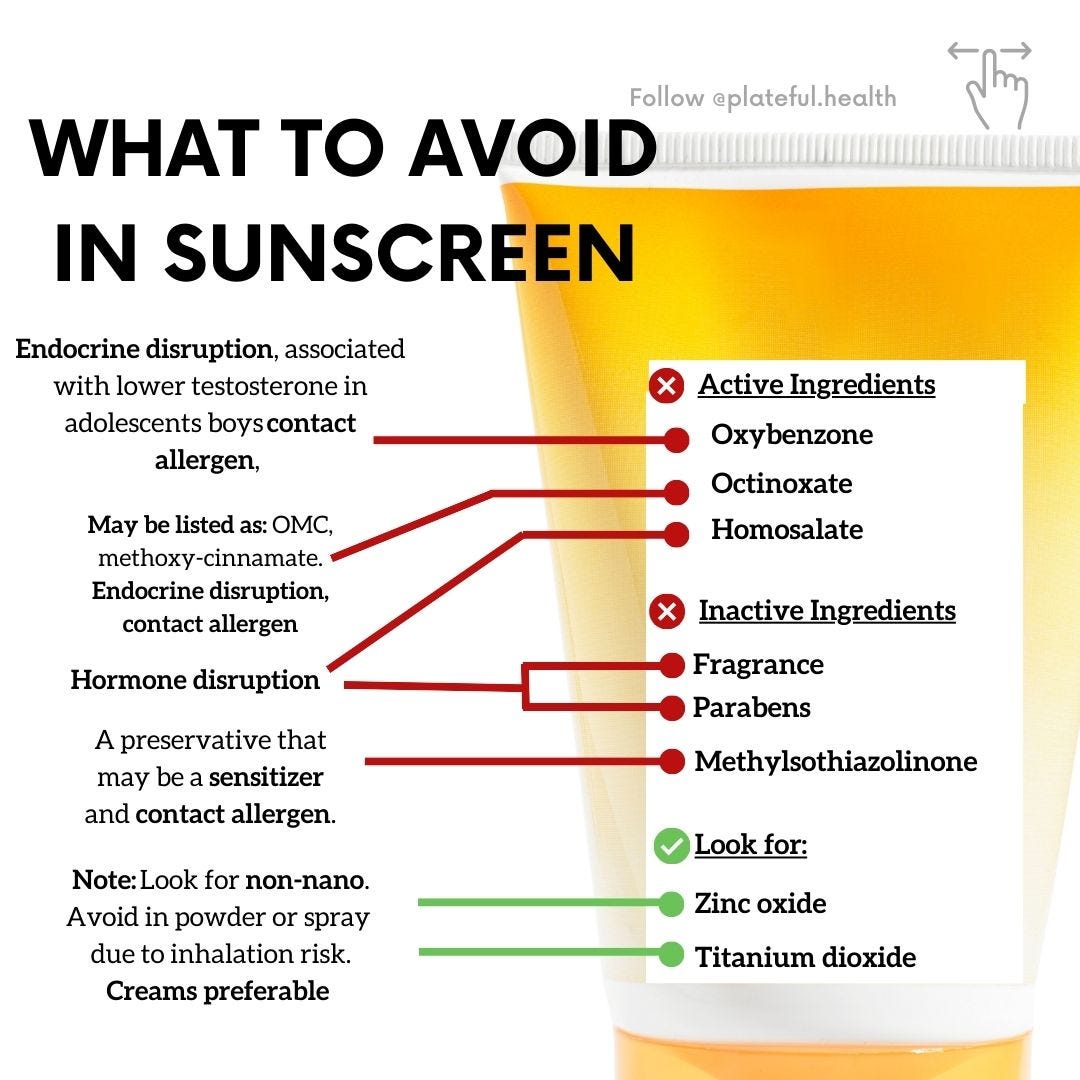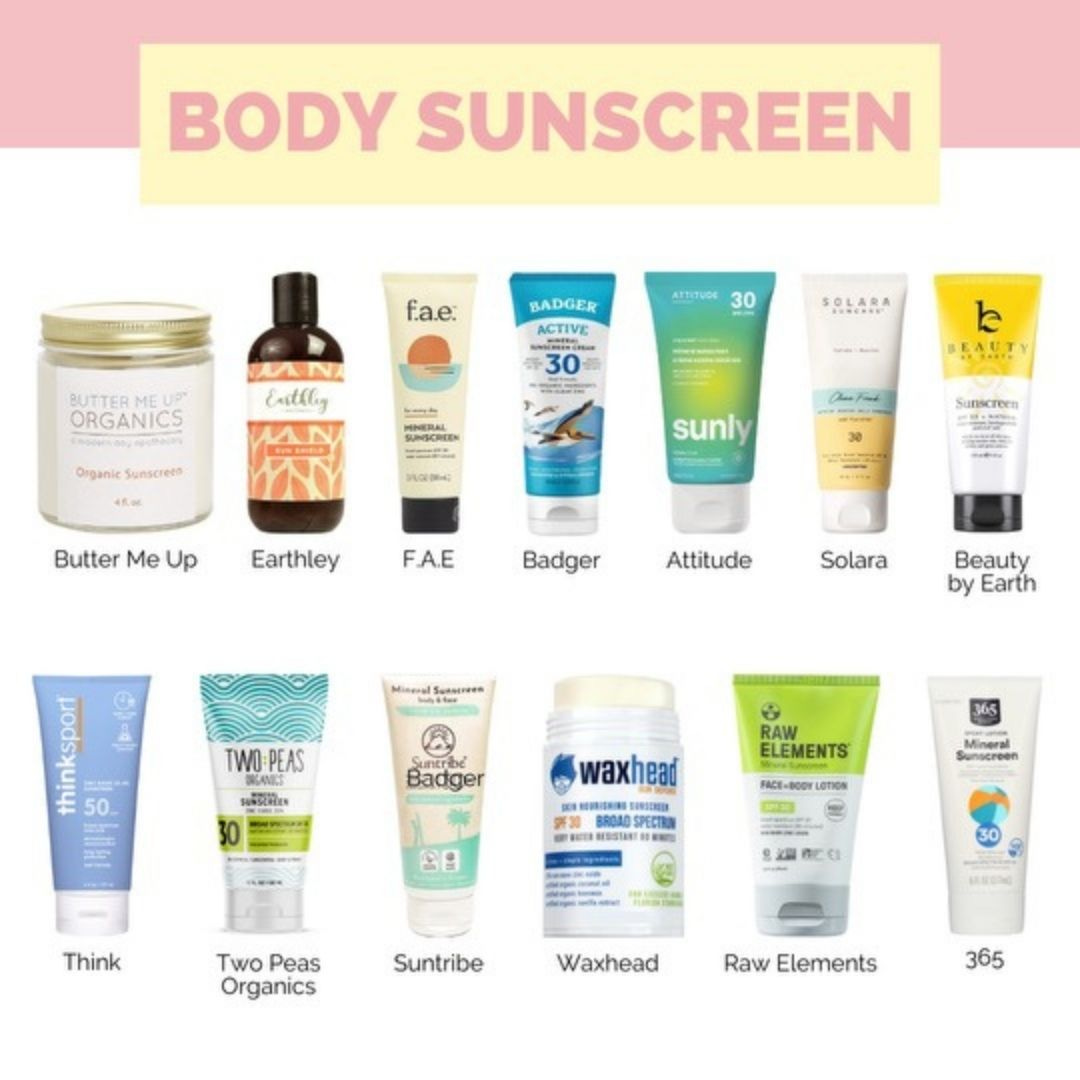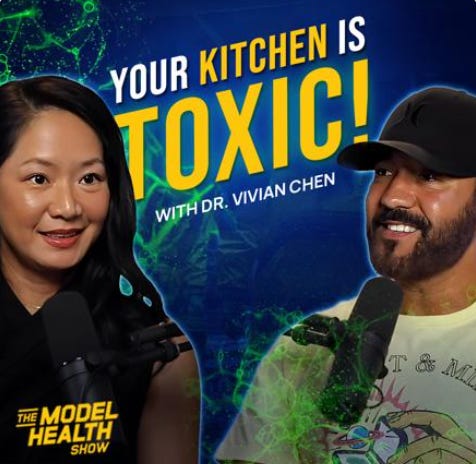Is your sunscreen toxic? Protect your skin safely and effectively
Did you know only TWO active ingredients are deemed SAFE and EFFECTIVE for sunscreen by the FDA? Learn to pick better sunscreen and protect your skin this summer
Summer is here 🙌 !
Whilst sunlight is vital for health AND is an important way for us to obtain Vitamin D, studies show UV light causes oxidative damage to our skin cells. Of course, a healthy diet full of antioxidants ‘may’ mitigate some of this oxidative damage, but there is no arguing that UV can cause premature skin aging, and hyperpigmentation, AND increase our risk of skin cancers, and diet alone cannot act as ‘sunscreen’.
It is also easier to get sunburnt now compared to 200 years ago - there are more UV rays reaching the earth's surface due to our damaged ozone, and that, in combination with a poor diet/lifestyle, can make us even more susceptible to the damaging effects of UV…
But when it comes to sunscreen - it is important to check the ingredients and make sure they are SAFE.
Chemical vs Mineral
This might shock you. Did you know that in 2021, the FDA only deemed TWO active ingredients 😲 SAFE and EFFECTIVE for sunscreen by the FDA?
1️⃣ Zinc oxide and
2️⃣ Titanium dioxide.
These are both MINERAL sunscreens.
In case you haven’t heard this terminology before, there are TWO main categories of ingredients that protect us from UV rays:
☀️Chemical sunscreen e.g. oxybenzone, avobenzone - are absorbed into the skin and work by ABSORBING the UV. It is usually clear on application, and that’s why people love it.
☀️Mineral sunscreen e.g. titanium dioxide and zinc oxide - sits on top of the skin and REFLECT the UV. Traditionally looks ‘white’ although newer ones are much better and don’t live much of a white cast anymore.
What do you find in MOST sunscreens on store shelves? Chemical sunscreens… 🤯 Not only have these active ingredients (like oxybenzone, avobenzone etc) NOT been deemed safe and effective by the FDA, a study in JAMA found that they are potentially HARMFUL and linked to endocrine disruption (i.e. they can mess with our own hormones).1
Chemicals sunscreen was detected in the bloodstream after just one use, sometimes for days after application. These ingredients are also detected in breast milk, and have been associated with lower testosterone levels in teenage boys.2
These are the ingredients I would avoid:
Oxybenzone - (sometimes called benzophenone-3) In an evaluation of CDC-collected exposure data for American children, researchers found that adolescent boys with higher oxybenzone measurements had significantly lower total testosterone levels.3 Another systematic review found that a higher concentration of oxybenzone was associated with adverse birth outcomes including lower birth weight and pre-term birth. It is also a contact allergen, may cause systemic toxicity, and may be harmful to aquatic life. It persists and bioaccumulates in our body, and has been detected in breast milk, amniotic fluid, and blood; meaning it can cross over to babies.456 It is banned in Hawaii due to its harm on aquatic life, and yet still found in around 40% of chemical sunscreens.
Octinoxate - (aka OMC or methoxy-cinnamate) is linked to endocrine disruption as well as reproductive toxicity in animal studies - and yes I know this may not translate to humans but if there is a safer alternative, I will use that while more research is done.7
Homosalate - linked to reproductive and developmental toxicity. The European Union Scientific Committee on Consumer Safety concluded that “considering the concerns related to potential endocrine disrupting properties, the SCCS has concluded that homosalate is not safe when used as a UV-filter in cosmetic products at concentrations of up to 10% linked to reproductive and developmental toxicity.” They recommend a concentration of only up to 0.5% in products.
I can usually smell spray sunscreen a mile away - one of my pet peeves when enjoying a beach vacay… why is this? Aside from the active ingredients above to avoid, sunscreen usually has “Fragrance’ added to make it ‘smell good’. The trouble with fragrance is, that it can umbrella 2000+ chemicals including phthalates, which are known endocrine disrupters. And when we spray these, we are inhaling them and then absorbing them through our skin.
So scan the “Inactive ingredients” on that bottle, and put it back on the shelf if it says “Fragrance” on the ingredient label.
Look for sunscreen with zinc oxide and titanium dioxide - I know titanium dioxide has bad press right now thanks to Skittles 🤣(rightly so, it has no place in our food), but I don’t have an issue with non-nano titanium dioxide applied to the skin - the skin is a much more robust barrier than our GI tract. Molecular size (and nuance) matters when it comes to ingredients.
“Broad Spectrum” - There are two types of UV light: UVA - causes premature skin aging. UVB - causes sunburn. Both, through unsafe exposure, can be associated with skin cancer risk. SPF indicates the amount of protection against UVB, not UVA. Broad spectrum protects against both - so look for that.
Avoid aerosol spray bottles - may not offer adequate coating and protection, and may pose a chemical inhalation risk. That said, I know these are convenient and I have to admit when I send my kids to tennis camp in the summer, I pack spray bottles in their bags… because I found them using their friends’ (more toxic, chemical-based ones 🤪 out of convenience)... So in my house, we compromise. They apply their cream-based sunscreen before leaving, and if they need quick top-ups on the courts, they use their sprays, and they know to hold their breath while spraying 😅.
Avoid products combined with bug spray as it may have reduced efficacy.
What does my family use?
I’ve linked the products we use, love, AND my affiliate discount codes » here.
For face, I like two tinted sunscreens. I prefer the RMS as the ingredients are ‘cleaner’ and it gives me a lovely dewy glow. I use the light and medium shades together for a more natural look. I also like the Dime tinted wonderscreen, but they do use Phenoxyethanol, so if it’s an ingredient you are sensitive to or don’t like, skip that one.
For body, we use Thinksport Clear Zinc SPF cream (affiliate discount code: Platefulhealth20). On the rare occasion, I do pack their sprays into my kids’ tennis bags. I prefer creams over sprays. We are not perfect - spray means they will use it rather than borrowing their friends’, more toxic sprays.
These are not by any means the only ‘better ingredient’ sunscreens out there though! Badger, Raw Elements and Earth Mama are also ones I’ve used in the past.
If you want to explore more options, here is a round-up post I did with my friend Karalynne over at Just Ingredients recently - many of these can now be found in Target and Wholefoods too, so take this with you when you go shopping.
P.P.S. 🚨NEW Podcast alert! Lots of you ask me to share podcasts I’ve been on, so here’s an UNMISSABLE one I promise you will find helpful. I went on the Model Health Show recently, and shared tips on hidden toxins in our kitchen that could contribute to weight gain. If you are doing everything right and still struggle with weight issues, this is a must-listen.
I'm an affiliate for some of the products linked on my website. I get asked about products I use and love all the time, and by being an affiliate, I can negotiate discount codes to share with you, plus earn a small commission if you use my code or link to purchase. This helps me to support my research so that I can continue to provide the content on my platform, thank you so much for your support.
Matta MK, Zusterzeel R, Pilli NR, Patel V, Volpe DA, Florian J, Oh L, Bashaw E, Zineh I, Sanabria C, Kemp S, Godfrey A, Adah S, Coelho S, Wang J, Furlong LA, Ganley C, Michele T, Strauss DG. Effect of Sunscreen Application Under Maximal Use Conditions on Plasma Concentration of Sunscreen Active Ingredients: A Randomized Clinical Trial. JAMA. 2019 Jun 4;321(21):2082-2091. doi: 10.1001/jama.2019.5586. PMID: 31058986; PMCID: PMC6549296.
Janjua NR, Mogensen B, Andersson AM, Petersen JH, Henriksen M, Skakkebaek NE, Wulf HC. Systemic absorption of the sunscreens benzophenone-3, octyl-methoxycinnamate, and 3-(4-methyl-benzylidene) camphor after whole-body topical application and reproductive hormone levels in humans. J Invest Dermatol. 2004 Jul;123(1):57-61. doi: 10.1111/j.0022-202X.2004.22725.x. PMID: 15191542.
Scinicariello F, Buser MC. Serum Testosterone Concentrations and Urinary Bisphenol A, Benzophenone-3, Triclosan, and Paraben Levels in Male and Female Children and Adolescents: NHANES 2011-2012. Environ Health Perspect. 2016 Dec;124(12):1898-1904. doi: 10.1289/EHP150. Epub 2016 Jul 6. PMID: 27383665; PMCID: PMC5132630.
Ghazipura M, McGowan R, Arslan A, Hossain T. Exposure to benzophenone-3 and reproductive toxicity: A systematic review of human and animal studies. Reprod Toxicol. 2017 Oct;73:175-183. doi: 10.1016/j.reprotox.2017.08.015. Epub 2017 Aug 24. PMID: 28844799.
European Commission Scientific Committee on Consumer Safety, Opinion on Benzophenone-3, <https://ec.europa.eu/health/ph_risk/committees/04_sccp/docs/sccp_o_159.pdf>, accessed May 27th 2024
Fediuk DJ, Wang T, Chen Y, Parkinson FE, Namaka MP, Simons KJ, Burczynski FJ, Gu X. Tissue disposition of the insect repellent DEET and the sunscreen oxybenzone following intravenous and topical administration in rats. Biopharm Drug Dispos. 2011 Oct;32(7):369-79. doi: 10.1002/bdd.765. Epub 2011 Aug 2. PMID: 21812003.
Schlumpf M, Schmid P, Durrer S, et al. Endocrine activity and developmental toxicity of cosmetic UV filters--an update. Toxicology. 2004 Dec;205(1-2):113-122. DOI: 10.1016/j.tox.2004.06.043. PMID: 15458796.










